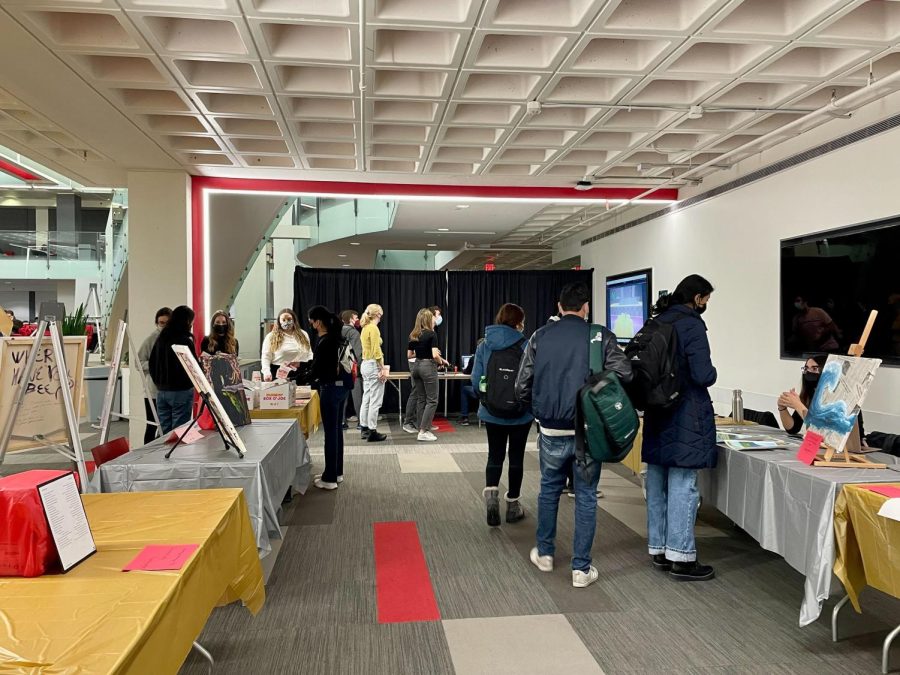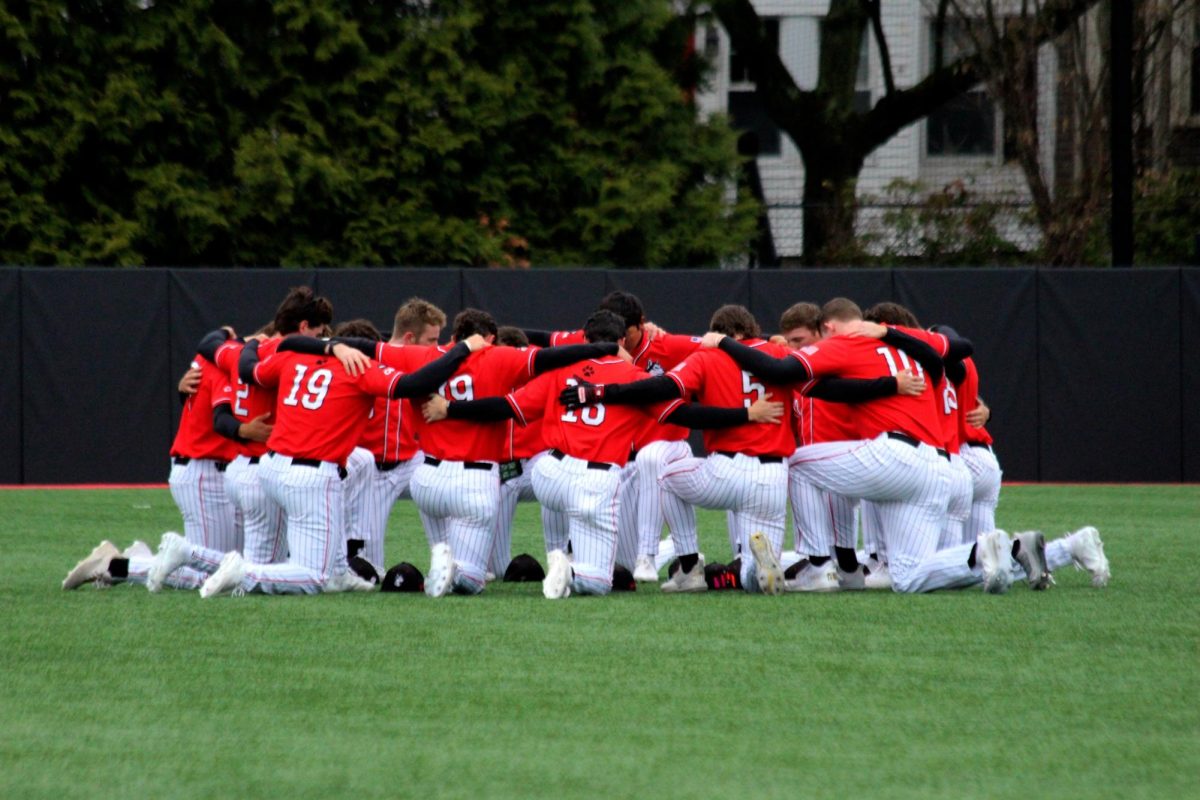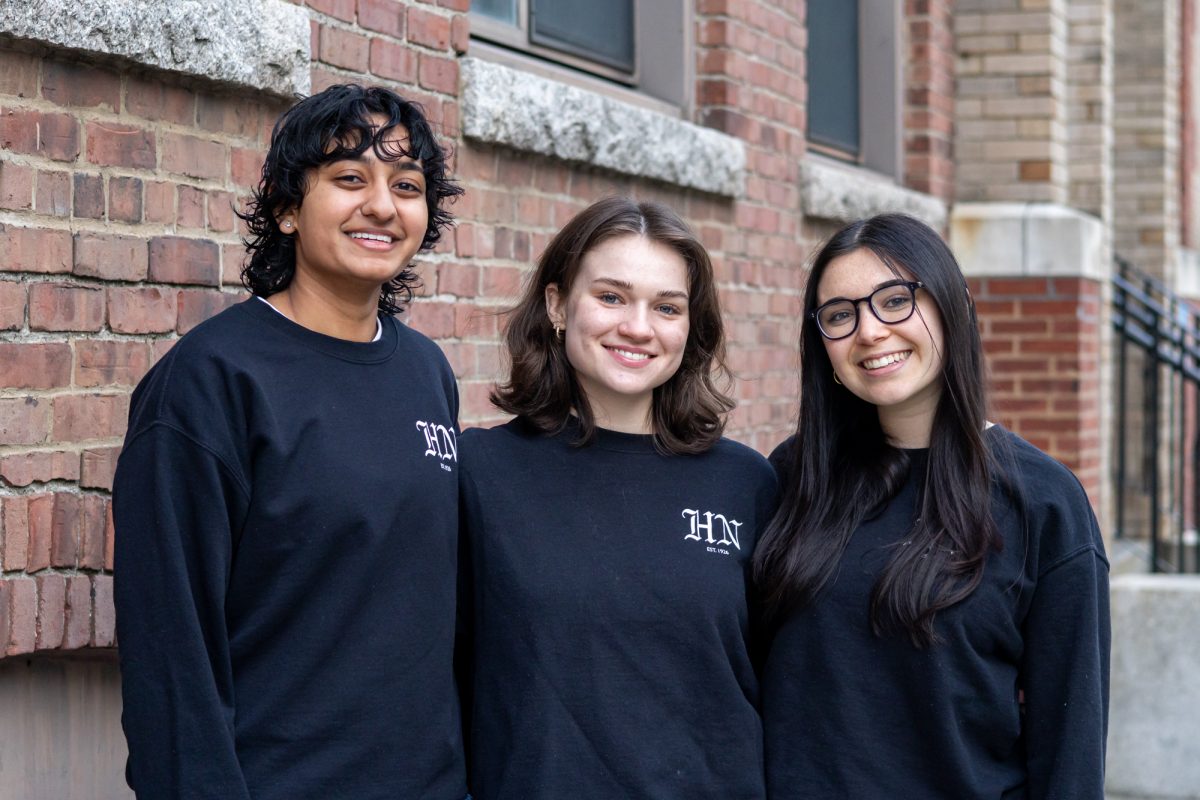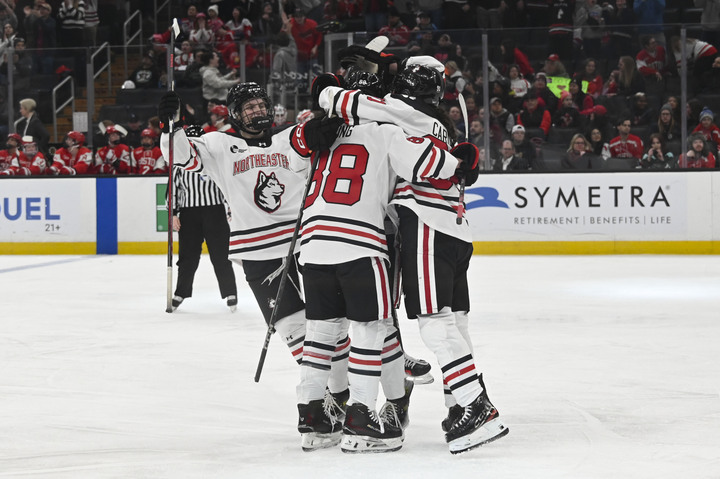SGA showcases student art at fifth annual Block pARTy
Artists and students gathered in the Curry Student Center March 2 for a bustling and picturesque art show with the aroma of hot chocolate and donuts in the air.
March 14, 2022
Northeastern’s fifth annual Block pARTy, sponsored by the Student Government Association, or SGA, took place March 2. After a year off because of COVID-19, SGA revived the event to showcase students’ visual artwork.
“It is a platform for students, any student that submitted their work, as a means to display their artwork,” said Tiffany Pottenburgh, a SGA senator and a second-year history, culture, and law major.
SGA did not limit submissions to students with an art or design major or minor.
“We want student artists who create art, whether as a hobby or for assignments, to share their work with a special audience and through a special platform,” said Emily Perez, vice president for student affairs and a fifth-year English and communication studies combined major.
This year, the event featured various mediums of art including paintings, drawings, sketches, video games and literature. Artists had different types of creative processes, strategies, descriptions and inspirations for their artwork.
Diana Steelman, a fifth-year design major, demonstrated observational drawing in her pieces.
“I like to choose and observe objects to draw,” Steelman said. “I drew this one with pencil and that one with charcoal. This one I had to cover the whole page in graphite.” Steelman had drawings of apples, a Dunkin’ coffee cup, and abstract shapes.
Emma Spurgat, a fifth-year mechanical engineering major with an art minor, chose drawing ideas through traveling and personal experiences.
“I do figure drawing, self-portrait, and conceptual drawing,” Spurgat said. Specifically, she drew rock formations she witnessed on a trip to Utah.
Mona Sahney, a second-year business administration major with a graphic and information design minor, showcased her love for landscapes.
“I love to draw landscapes because I am an outdoorsy person,” Sahney said. “Where I’m from, in India, there are a lot of mountains and that’s where my love for nature sprouted.”
In one of Sahney’s pieces, she used gouache, a paint that uses opaque pigments and watercolor. In another, she filled her canvas with old Huntington News newspapers. On top of the newspapers, she drew waves.
“I wanted to portray the overwhelming nature of politics on people, especially in today’s world. The waves are crashing down on us, inevitably and unexpectedly,” she said.
Samantha Davidson, a second-year business administration major, had a different approach for her art piece, creating a puzzle to visualize her experience with chronic illness.
“My piece describes my daily life and the various pains I go through,” she said. “I suffer from chronic vestibular migraine and vertigo and it’s extremely difficult to describe my daily pain through words because it cannot be fully understood or described accurately.”
Art, however, provides an alternative path to replace her words.
“These slices represent visualizations of my symptoms. For instance, the galaxy slice translates into my wooziness and the fire translates into my sensitivity to light,” she said.
Davidson then proceeded to shift the pieces on her work.
“The ability to rearrange the puzzle’s circles represent the uncertainty of what combination of symptoms each day will bring.”
Jared Weinstein and Jonathan Lehman, both second-year computer science and game development majors, brought a unique piece of collaborative art — a self-developed video game.
“It was initially a passion project last summer because it seemed cool and fun,” Lehman said. “We continued to develop it because we wanted to make something that resonated with people.”
Weinstein and Lehman’s game consisted of a Switch controller, a laptop and a screen where visiting students could maneuver the Switch and make the game’s character jump, sprint and walk in a virtual world without “dying.”
Developing the game was no walk in the park, Lehman said..
“We worked on it for nine to 10 months, during classes as well. We edited the game on the computer numerous times and the controls were also rough at first,” Lehman said. Weinstein and Lehman hope to make the game accessible to more people in the future.
Students attended the art show to show support and ask the artists questions.
“It’s a good opportunity to see our student talent and I’m excited to interact and meet with the artists in person,” said Ashlynn Braisted, a first-year combined computer science and design major.
Editor’s note: Some quotes were updated to more accurately represent the meaning of the artists’ pieces.







